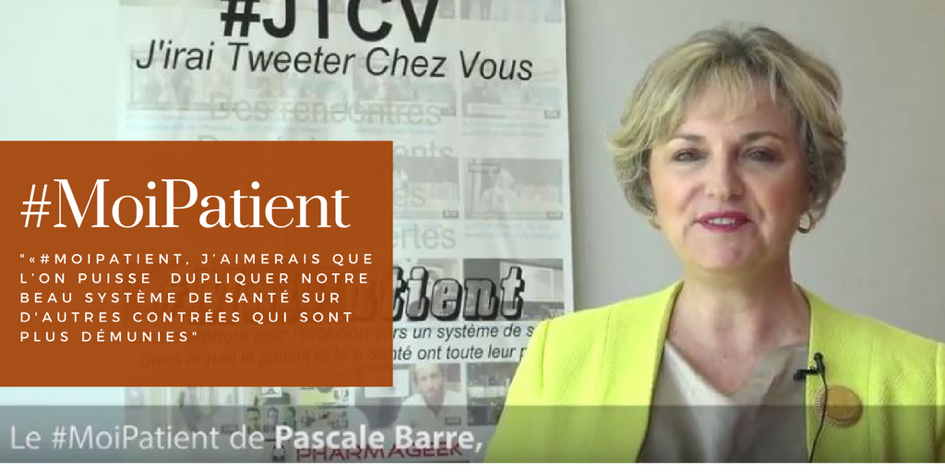Effet Uber: les assurances commencent leur mue
04/08/2015In US, UK, and Germany, top 10 pharma apps make up 66 percent of downloads
04/08/2015The Evolving Role of Social Media in Healthcare
Like most technology, social media is constantly evolving to fit into everyday activities. Now, social media is no longer an optional marketing tool for companies, especially healthcare. But why is it still treated like an option? Many healthcare organizations are still unclear on how to integrate social media into their marketing campaigns and are fearful of HIPAA regulations affecting patient privacy. Fortunately, these obstacles are easy to overcome by developing guidelines focused on protecting patient privacy. Social media opens up many opportunities for health systems. It allows organizations to build connections, share discoveries, and develop credibility as thought leaders. While other industries care about the amount of likes and followers they obtain, healthcare focuses on the impact created. So, how are healthcare organizations utilizing social media? Let’s have a look: The Role of Social Media Today Patient-Powered Research Networks Social Media plays an important role in healthcare today as it has an impact on patient empowerment. Patients have untold information about their healthcare experiences at their fingertips and want pass it along to others who are in the same situation. To enable the patient voice, several healthcare organizations have developed tailored social platforms for targeted audiences. One example of a patient-powered research network is PatientsLikeMe. Created in 2004, co-founders Jeff Cole and Ben and James Heywood set out to configure a way for patients to manage their own health conditions, changing the way the industry conducts research as well as improves patient care. They founded PatientsLikeMe based on the trial-and-error experience their brother went through in his fight with amyotrophic lateral sclerosis (ALS). They wanted connect with people with ALS and see what was working for them. Today, with over 300,000 members, their idea does just that. These patient-powered platforms are creating innovative approaches to old problems by utilizing social media. Instead of finding a solution, they enable targeted audiences to explore other methods, learn from each other, and adapt to meet the specific needs of their environment. Live Tweeting A big reason why healthcare organizations participate in social media is to help educate patients. They want to educate the public on innovative medical cases and more importantly engage consumers. In 2013, St. Vincent Charity Medical Center live tweeted a total knee replacement surgery, in which over 3,800 people followed on Twitter and 3,000 over live-stream video and their hashtag #stvknee was a trending tag throughout the process. The following year, Sunnybrook Hospital in Toronto live tweeted a procedure for a heart bypass. Healthcare Hashtags In relation to live tweeting, healthcare organizations are beginning to utilize hashtags in social updates. Hashtags first became popular on Twitter as they were being used to group together similar topics that use the hash [#] symbol. With the continuous flow and discovery of health information, hashtags provide patients and physicians with the ability to filter available data and streamline their search. A user can search #healthcaredata, and receive live tweets, accounts, photos, videos, and other relatable posts using that hashtag. Hashtag databases, like Symplur, provide healthcare organizations with the trending hashtags surrounding conferences, diseases, Twitter chats, and general usage of the week. From this information, they can develop social posts catered to what patients are currently searching for. Why Is Social Media in Healthcare Important? Simply, it’s all about building trust. Social media is like a referral site on steroids. Through social interactions, patients have the ability to develop a first impression of a hospital and physician before meeting them [in person]. Patients are using social media to research and make decisions, especially in regards to healthcare. The IMS Institute for Healthcare Informatics, in fact, found that between 70 and 75% of US consumers look to the Internet for healthcare advice, of which 40% rely on responses from social sites. Based on this statistic, it should come as no surprise that social media has become the preferred medium for patient-to-physician, physician-to-patient, physician-to-physician, and patient-to-patient communication. By engaging and interacting on social media sites, healthcare organizations can help revitalize the word of mouth referrals and eliminate barriers that were created by the lack of communication. In Conclusion Let’s face it: social media has become a necessity for the healthcare industry. Though it may not be the entire answer to improving patient engagement, it is a huge proponent in communicating with target audiences. How has your organization integrated social media into your marketing campaigns? – See more at: http://www.evariant.com/blog/the-evolving-role-of-social-media-in-healthcare#sthash.Rou9uWON.dpuf
Source: www.evariant.com




